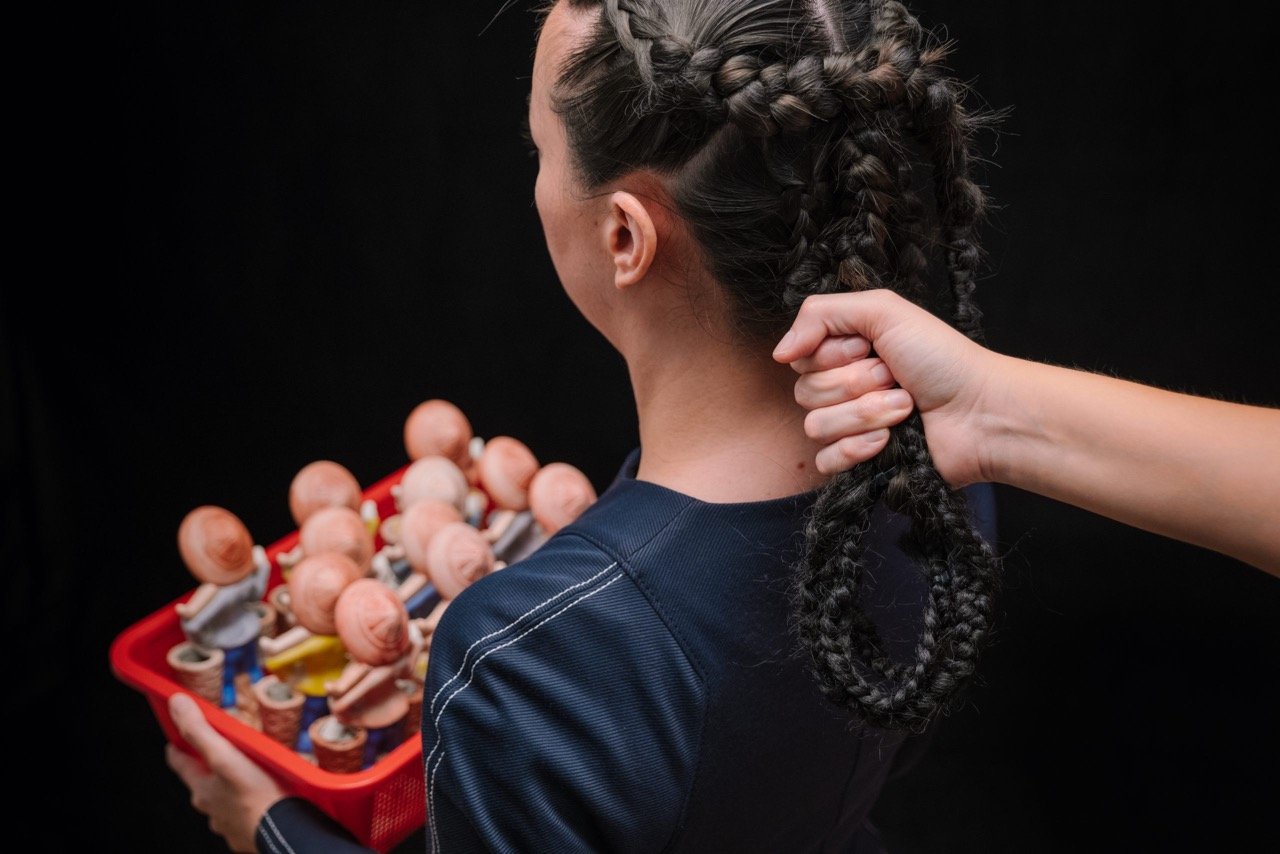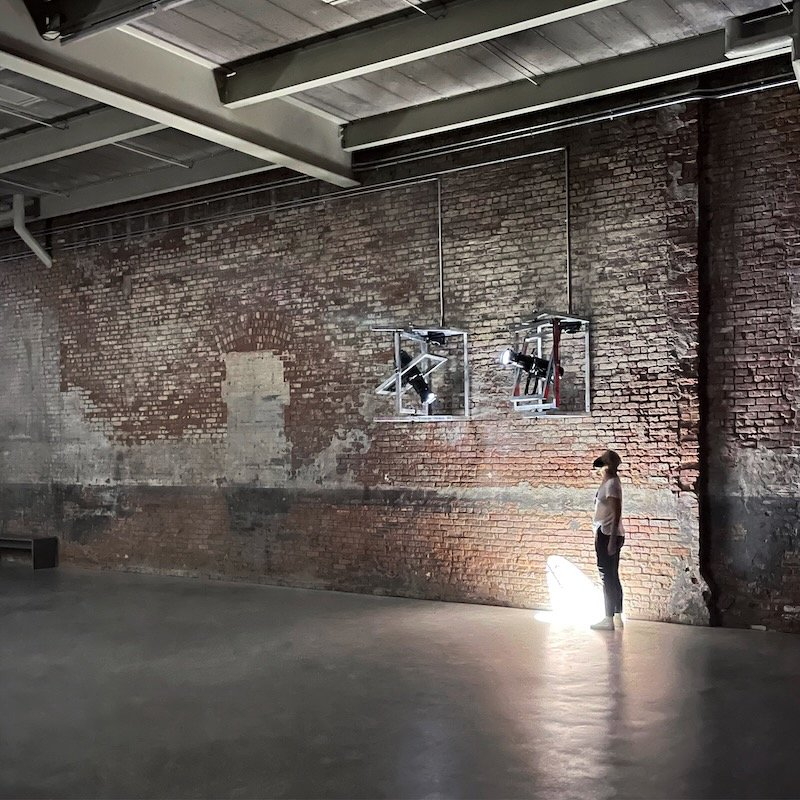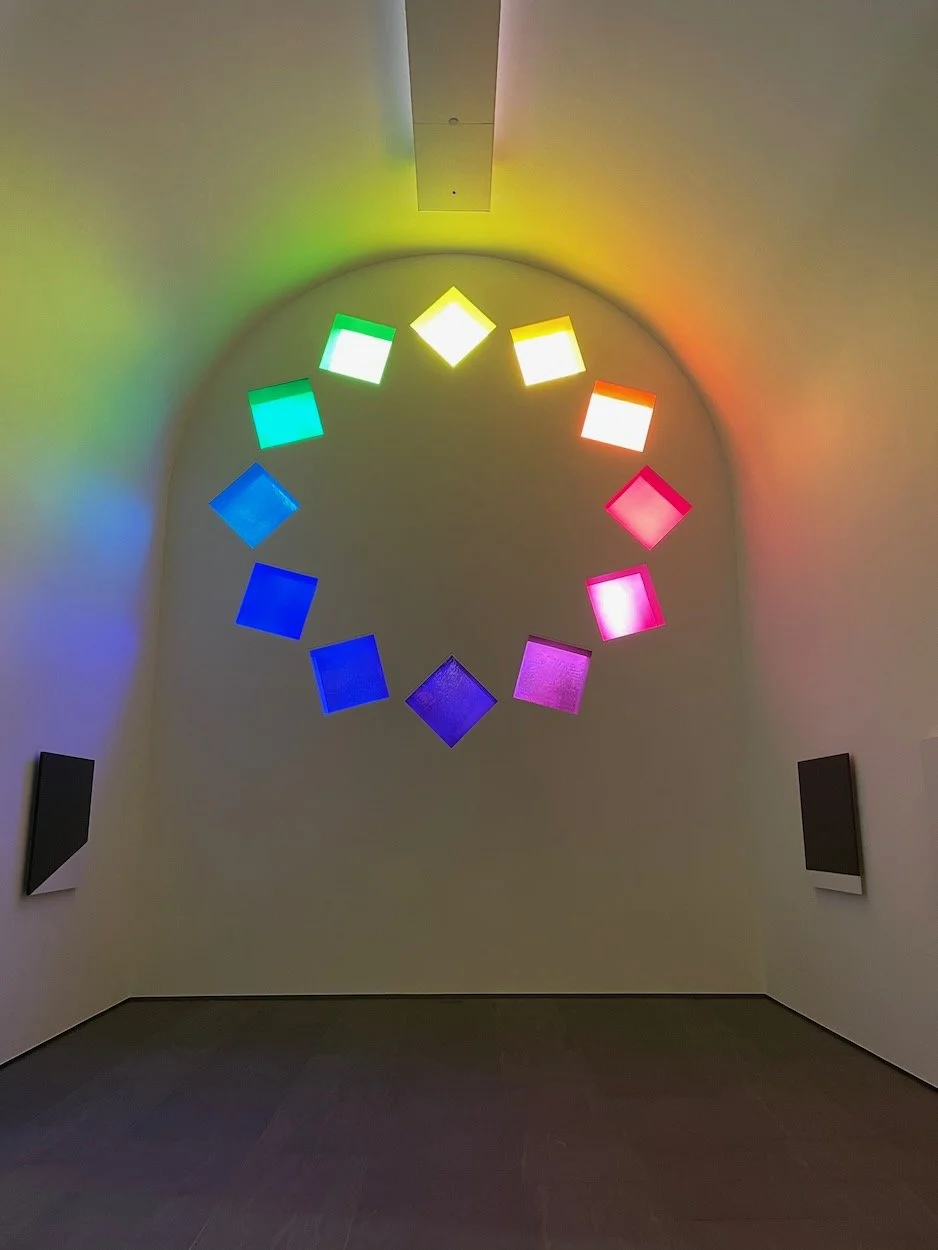These are the exhibitions and artworks I will remember from 2021. I start with a bit of writing and then trail off with a list.
Exhibitions
Installation view of Niki de Saint Phalle in the 1960s at the Menil Collection, Houston. Photo: Paul Hester
Niki de Saint Phalle in the 1960s at The Menil Collection
I visited the exhibition Niki de Saint Phalle in the 1960s twice. The first visit was an introduction. I acquainted myself with her work, the time period, and the materials. I wasn’t sure how I felt about it, but I left the exhibition curious. When I visited a couple of weeks later, I took more time to look and observe myself in relation to the work.
Her early work, presented in the first room, was rough and aggressive. Color was either muted or nonexistent. The harshness seemed most acute in Tu est moi (You are me) (1960). A gory, visceral red moon stood against a flat black sky and white ground. The moon was held behind a metal, sharp cog. Below it were hard tools and a gun. I imagined a strong feminine force hovering above a crowd of harmful masculine actors.
The shooting paintings came soon after. A child of the early 00’s, my first thought went to Princess Diaries and the catharsis found in “balloon painting”. Shooting a painting with a gun, however, is much more violent than darts and balloons. Positioning a scene of white objects against a canvas, Saint Phalle then shoots–destroying the objects and causing paint to break through. The paint oozes or explodes outwards. Process is tied to the work, and Saint Phalle played that at up by making the work a performance. Saint Phalle organized shooting sessions with audiences and sometimes guest participation. In the process of wrapping up From the Cave, I was particularly interested in Saint Phalle’s incorporation of performance from start to finish.
Her work continued to change drastically. The second half of the exhibition charted the evolution of the Nanas. Madame or Green Nana with Black Bag (1968) stood proud and resolutely in the center. She is a tower. Her legs are sturdy and unequivocal, and her dress is an obtuse green but comical. She is playful but cannot be ignored. From there, a series of acting, jumping, and moving Nanas. They were feminine, curvy figures actively enjoying life and taking up space. While the exhibition began cold and haunting, it ended bright and cheering.
This exhibition was an incredible introduction to a pivotal moment in Saint Phalle’s life, provoked new ideas about performance, and encouraged me to stand tall (but not take myself too seriously) and embrace joy. It was “one for the books”, and I will continue to ponder and enjoy it. I also learned the importance of time (sometimes divided into a couple of days) and writing when it comes to exhibition visits.
Niki de Saint Phalle in the 1960s was cocurated by Michelle White, Senior Curator, The Menil Collection, and Jill Dawsey, PhD, Curator, the Museum of Contemporary Art San Diego.
There were several accordion books by Etel Adnan on display at the Guggenheim.
Etel Adnan: Light’s New Measure at the Guggenheim Museum
I was introduced to Etel Adnan in October–only a few months before her passing–at the Guggenheim. The exhibition began at the bottom of the museum and rounded halfway up the building to meet with the Kandinsky exhibition. Adnan’s paintings radiated despite their small size. Bright flat colors buzzed next to one another. They referenced landscape but remained things unto themselves. I couldn’t help but smile while looking at them. Each one continued to surprise me.
A quarter of the way up, the exhibition invited guests into the Guggenheim reading room–the entrance of which is shaped like a keyhole–to read Adnan’s writing. The reading room was easy to overlook, so I wondered in without the attention of my friends. The room was filled with copies of Etel Adnan’s books. On the table, there were cards for readers to write and share their favorite passages. Surrounded by Adnan’s writing and in the company other curious readers, I was giddy with excitement. I read Time and copied down a passage. In the process, I subbed out “my death” for “me”:
in Yosemite Valley,
with the color of the Pacific still
trailing in my eyes, I buried
the essential and the inessential. That
happiness will survive me
Etel Adnan: Light’s New Measure was organized by Katherine Brinson, Daskalopoulos Curator, Contemporary Art, and Lauren Hinkson, Associate Curator, Collections.
Installation view of Epic Abstraction
Adrian Ghenie, The Alpine Retreat, 2016, oil on canvas
Artworks
Austin on April 3, 2021 at the Blanton Museum of Art on the campus of The University of Texas at Austin
Ellsworth Kelly, Austin, 2015, Blanton Museum of Art
I made my pilgrimage to Austin for the first time in March. I was expecting a very solemn space like The Rothko Chapel which features dark, near-colorless paintings on all sides and light poring in from above. It is powerful and encourages visitors to turn inward, but it is also stark and isolating. The paintings stare right back and offer only a glimpse of respite. Austin was the near opposite. While the structure and the walls encouraged a sense of quiet much like The Rothko Chapel, the experience is uplifting and pulses with a positive, calm energy. The light filters through colored glass and encourages looking. I walked around and observed the light as time elapsed. I saw and played with my colorful shadow. Austin felt like an embrace, while the Rothko Chapel felt like a question.
Installation view of The Big Show 2021. Photo: Nash Baker
Benji Stiles’s work was installed on the wall opposite of mine at Lawndale in The Big Show 2021. The exhibition was filled with works by so many great Houston-based artists, but Boys & Girls is the only one that I distinctly remember. The shooting clay pieces are light pink on the left side and light blue on the right side. The colors brought to mind babies–girls on the left and boys on the right. Very innocent and soft in terms of material. The layout looked similar to birth control pill packets which implied something protective. Yet, the objects are cast in the shape of shooting clays which are meant to be shot as sport with guns–both … and violent.
Nicole Eisenman, Man at the Center of Men, 2019. Bronze and stainless steel. Edition 2 of 4, 2 AP. Installed at The Contemporary Austin – Laguna Gloria, Austin, Texas.
Nicole Eisenman, Man at the Center of Men, 2019. Bronze and stainless steel. The Contemporary Austin – Laguna Gloria, Austin, Texas.
Plans for the New Year
I will write and post more regularly in 2022. Stay in the loop and join the conversation by joining my email list! Sign up here.








